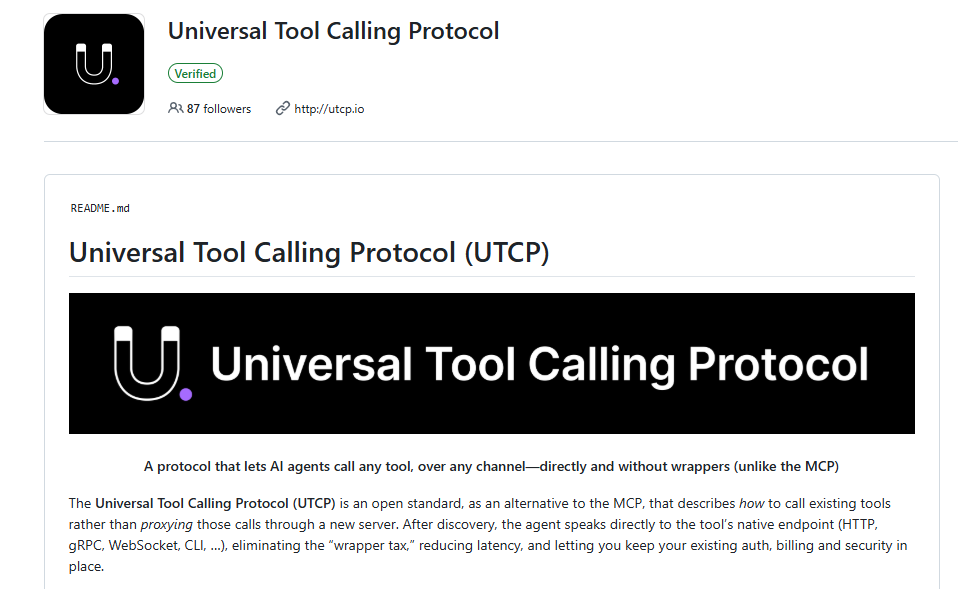UTCP Emerges as Game-Changer in AI Tool Protocols
UTCP Revolutionizes AI Tool Integration with Direct Connection Approach
With artificial intelligence technology advancing rapidly, the need for efficient tool calling protocols has never been greater. The emergence of Universal Tool Calling Protocol (UTCP) marks a significant shift in how AI agents interact with external services, positioning itself as a compelling alternative to the established Model Context Protocol (MCP).

Breaking Down the UTCP Advantage
UTCP introduces an innovative "zero-wrapper" architecture that connects AI agents directly to tool endpoints without intermediate proxy servers. This open-source protocol uses simple JSON description files (called "UTCP manuals") to define tool functions and calling methods, enabling:
- Native endpoint communication (HTTP, gRPC, WebSocket, CLI)
- Preservation of existing authentication and security mechanisms
- Significant reduction in latency compared to proxy-based solutions
- Compatibility with diverse protocols including WebRTC and GraphQL
How UTCP Improves Upon MCP Limitations
The Model Context Protocol (MCP), introduced by Anthropic in late 2024, established important standards for LLM-tool interactions but suffered from inherent inefficiencies:
- Proxy overhead: MCP's mandatory gateway layer added processing delays
- Development complexity: Required custom wrappers for each tool integration
- Protocol limitations: Initially designed primarily for HTTP-based services
UTCP addresses these issues through its direct connection model. For example:
"When accessing databases, UTCP organizes connections into standard formats for direct AI agent access, eliminating the proxy requirement while maintaining all security protocols," explains one technical document.
Developer Community Response
The tech community has responded enthusiastically to UTCP's launch:
- GitHub discussions highlight rapid adoption in API-heavy environments
- Social media praises the protocol's learning curve reduction
- Enterprise teams report 30-40% faster integration times versus MCP implementations
However, some developers note that UTCP's security model relies heavily on underlying tool configurations—an area potentially needing standardization in future updates.
Future Outlook and Industry Impact
Analysts predict several key developments:
- Growing enterprise adoption in complex workflow scenarios
- Potential emergence of UTCP-as-a-service offerings
- Standardization efforts around security implementations
- Expansion into IoT and edge computing applications
The protocol's flexibility makes it particularly valuable as AI systems increasingly interact with diverse digital ecosystems.
Key Points:
- Direct connection eliminates wrapper tax and reduces latency
- JSON-based definition simplifies tool integration process
- Multi-protocol support enables broader application scenarios
- Developer-friendly approach accelerates adoption
- Security model may require future standardization